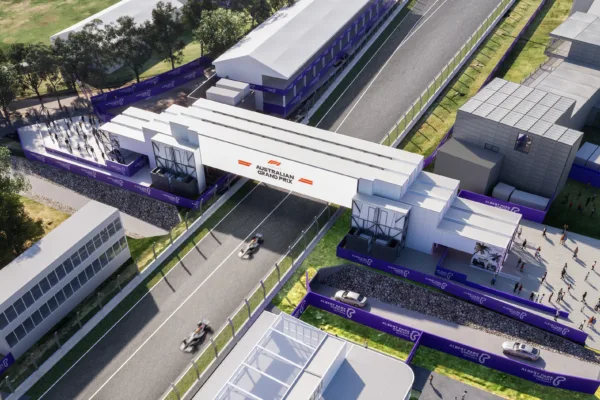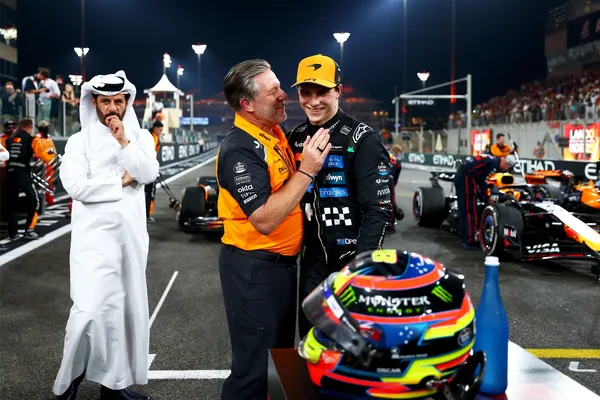Rewind: McLaren's 1998 switch sparks controversy
Tuesday, 23 July 2024
No surprise, but a seismic shock – McLaren's 1-2 Australian Grand Prix finish in 1998 was a result that most people saw coming, but definitely not in the manner that it came.
Fast, but fragile: that was the cold, hard truth facing McLaren when it arrived for the 1998 season-opening Formula 1® Australian Grand Prix at Albert Park.
After two years of Williams world titles in 1996 and '97, all signs from pre-season testing pointed to McLaren pair Mika Hakkinen and David Coulthard being the class of the field in Melbourne. A 1-2 result would have surprised few … yet when it happened, the underlying response was one of a different kind of shock.
We'd seen dominance in F1® before 1998 and we've seen it since, too – but McLaren at Albert Park in 1998 was next-level. Either Hakkinen or Coulthard led every practice session, Hakkinen pipped Coulthard for pole by 0.043 seconds – which proved to be crucial after Hakkinen won the drag race to the first corner – and the Mercedes-powered duo cleared off at the rate of three seconds per lap.
Michael Schumacher kept the McLarens within sight in qualifying at least, but such was the pace that his Ferrari engine expired five laps into the race. Hakkinen led the first 23 laps and Coulthard on lap 24 as the duo made their first pit stops, and then things got weird – and controversial.
In the lead, Hakkinen unexpectedly pitted again on lap 36; so unexpectedly that his team wasn't ready for him. The Finn thought he'd heard an instruction to box, and years later, McLaren team boss Ron Dennis suggested the team's radio had been hacked.
"The team said something on the radio, I was confused, I thought they asked me to come to change tyres and that was not the case," Hakkinen recalls now.
"They were just giving me some different information. So I just drove through the pit lane and I of course lost the lead of the race, David got the lead."
So that, then, appeared to be that; Coulthard, who'd taken McLaren's first win in 50 races at Albert Park 12 months earlier, was set to do the Melbourne double. After both Coulthard and Hakkinen – this time, correctly – pitted one final time, there were 16 laps to go, Coulthard had a 12-second lead, and drama looked like it would be in short supply.
But something was clearly happening; by lap 55 of 58, Coulthard's lead was a mere two seconds. And then it happened – coming out the final corner on the next tour, Coulthard slowed, Hakkinen roared past, and took the chequered flag minutes later.
What should have been a triumphant day for the team – third-placed finisher Heinz-Harald Frenzten of Williams was a lap down – became one of enormous controversy when it soon became evident that team orders had decided the result. Hakkinen holding Coulthard's arm aloft on the podium sparked a cacophony of controversy, and prompted a wider discussion over pre-determined tactics and team intervention.
"We were sitting on the front row, me and David – and we just made a deal," Hakkinen now says.
"The driver who was first at the first corner when the race starts, that driver is going to win the Grand Prix. There's not going to be any fight.
"We had a deal, so David had to let me past – brilliant!"
Would the world have even been aware of the McLaren pre-race pact were it not for Hakkinen's mid-race radio confusion? We'll never know. Rival team boss Eddie Jordan spoke for many when he said "people have paid good money to see a real race, they want a ding-dong" as the dust began to settle; over 20 years later, Coulthard insists the controversy was merely a sign of the times, not of the action itself.
"At that time, team orders were not a common part of Formula One – it's accepted today, but back then it wasn't part of it," Coulthard says.
"We as a team did it for good reason – we had a fast car that had been unreliable in winter testing, so we knew if we pushed at 100 per cent, the chances of finishing were very slim. So to get both cars to the end – even if it was in the wrong order for my liking – was a big success for the team."





